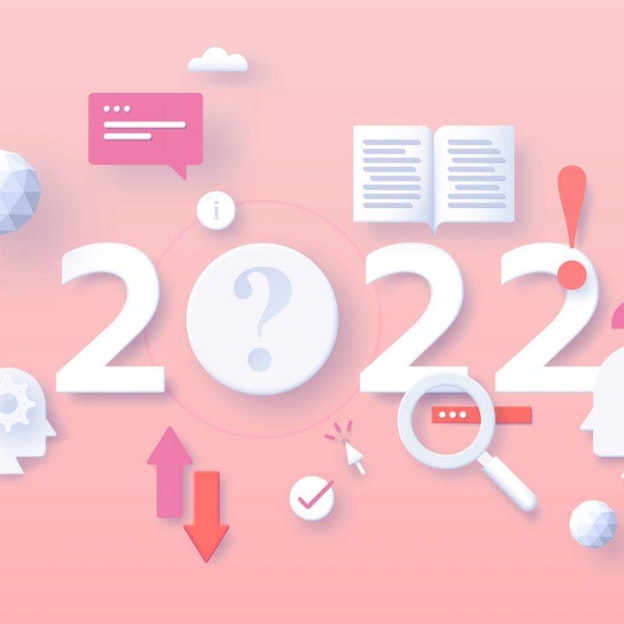Identity shift
ID-less advertising is coming and 2022 will be the year that sets the shape of this transformative change.
Firstly, we expect to see a new iteration of FloC. At present, this groups an individual’s browser into a so-called ‘cohort’ based on their recent browsing history. But it is highly likely that Google will move to a method with even greater privacy preservation.
This is likely to be based around ‘topics’, and it shouldn’t come as a surprise if this comes with FLoC’s rebrand.
The change is likely to be enacted by the algorithmic system generating topic-related categories associated with subjects on websites people visit, such as ‘food’ or ‘fitness’, as opposed to assigning an opaque numerical under the existing cohort ID system. It could also be embellished by self-generated data that users provide their browser to help ensure ads are more likely to relate to their interests.
From a consumer perspective, this will help users to understand what they are being assigned to, but from an advertising standpoint, efficacy challenges may arise.
After Google’s June announcement about its ‘Opt Out of Ads Personalization’, which is effectively their version of Apple’s ATT, it’s likely we’ll see AAID (Android Advertising ID)-less emerge imminently.
We also expect Google to publish a Privacy Sandbox proposal for an in-app environment. Already, current parts of the Attribution Reporting API are showing that Chrome has begun developing the use case of interoperability between in-app and web.
Łukasz Włodarczyk, VP of Programmatic Ecosystem Growth & Innovation at RTB House
Sharpened focus
The consumption of video content has exploded throughout the pandemic, with research by Forrester showing a 41 per cent increase.
And the pace is unlikely to slow in 2022 with more and more people – particularly the Gen Z cohort – now preferring their content in video form.
While producing videos can be more creatively challenging, it opens up a plethora of exciting opportunities for advertisers.
But having paid extremely close attention to their budgets throughout the pandemic, brands will be keen to monitor their video ad spend.
Higher demand for video advertising could lead to rising prices, which is why we expect 2022 to be the year when many marketers look for new partners and platforms that can leverage AI effectively, improving cost per completed view, while still reaching the right audience, at the right time, in the right context, to ensure the highest level of attention.
With the cookieless world nearly upon us, marketers will be looking for solutions that can achieve better visibility within the same budget while being built to last in the new world.
Łukasz Abgarowicz, VP of Agencies at RTB House
Perfect alignment
With ID-less advertising on its way, contextual targeting has become one of the main viable ways to reach a target audience.
And thanks to technological advancements, this method of placing adverts on websites that are directly relevant to the product being sold in the ad, is becoming easier and is now more scalable too.
Many of the major programmatic advertising companies have added this targeting method to their marketing mix.
But there is a divergence in the industry, with some working on their own solutions while others remain fully reliant on partnerships with services like Oracle’s Grapeshot.
The key to success will be how well these contextual tools are integrated within the entire programmatic ecosystem.
With the countdown to the cookieless future ticking, marketers must be pushing their partners to ensure they are maximizing the technology now available to optimize their advertising budgets, performance and reach.
Mateusz Jędrocha, Head of Upper Funnel Solutions Development at RTB House
The Big Question for 2022
Will it be the year when the Privacy Sandbox enters the home straight, or will there be more changes on the horizon that could potentially delay its introduction?
RTB House is an active participant in all the major communities, such as W3C, and yet we still find it difficult to predict new outcomes from the ongoing investigation being conducted by the CMA, ICO, and DG COMP.
Whilst industry-leading companies will test Privacy Sandbox proposals in the first half of the year, we expect to see some new developments in the ongoing investigations by the above regulators from the UK (the Competition and Markets Authority and the Information Commissioner’s Office) and the EU (Directorate General for Competition).
Any recommendations, opinions or agreements between these bodies and Google will have a huge effect on the implementation and timeline of the depreciation of third-party cookies on Chrome.
We are positive that the test phase will commence in 2022 and all industry stakeholders will gain access to some significant insights.
The questions are: How many of these entities will openly share results from the testing phase?; and how well are companies prepared for new browser-side marketing APIs?
Results from the Chrome origin trials may impact the deadline by introducing the need to improve particular proposals within a Privacy Sandbox.
If you have any questions, comments or issues, or you’re interested in meeting with us, please get in touch.
